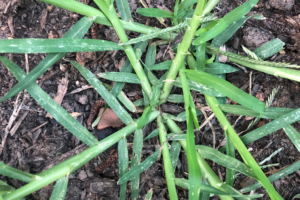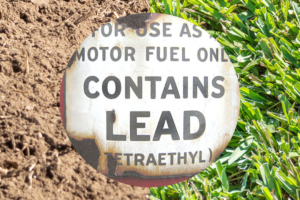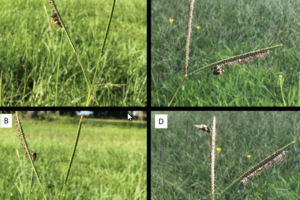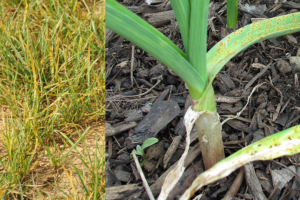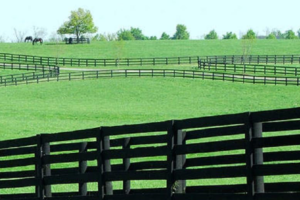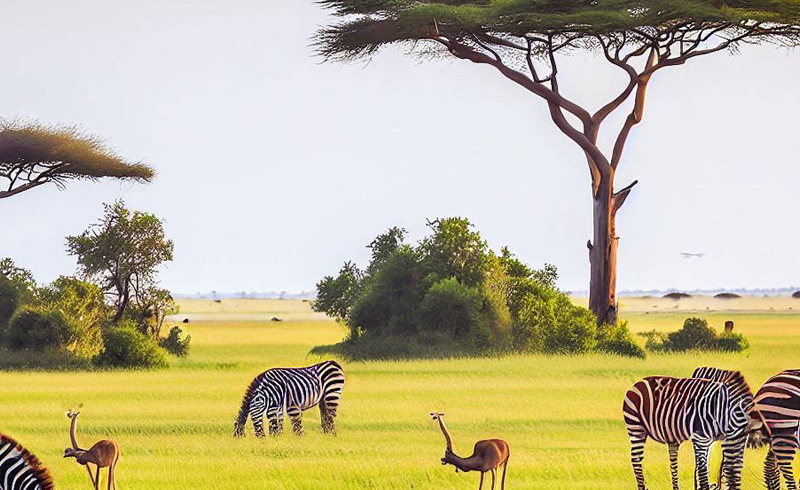
Introduction
Understanding Grazing Lawns and Overgrazing
In the world of ecology, there are two crucial concepts that we need to understand – ‘grazing lawns’ and ‘overgrazing.’ A grazing lawn refers to a specific type of grassland ecosystem. It’s characterized by short, dense grass that provides a rich food source for grazing animals. Think of it as a well-stocked grocery store for animals like cows and sheep or wild grazers like zebras and antelopes. However, this ‘grocery store’ needs regular customers. The animals must keep eating the grass to prevent taller, less palatable grass species from taking over.
On the flip side, we have ‘overgrazing.’ This happens when the ‘customers’ in our grocery store analogy get too enthusiastic. Overgrazing occurs when animals overeat the grass too quickly, not giving it enough time to regrow. This can lead to a decrease in the amount of grass available and, in severe cases, can even cause damage to the soil, leading to erosion.
The Importance of Balancing Grazing
So, why should we care about grazing lawns and overgrazing? Understanding the balance between these two is crucial for maintaining healthy ecosystems and supporting animal populations. When appropriately managed, grazing lawns provide a steady source of high-quality food for grazing animals. This can support larger populations of these animals and contribute to biodiversity.
However, if grazing is not managed correctly and overgrazing occurs, it can decrease the quality and quantity of available food for these animals. This can knock on the animal populations, potentially leading to decreased numbers. Overgrazing can also negatively affect the environment, leading to soil erosion and degradation of the land.
Understanding the effects of frequent grazing and finding the balance between maintaining grazing lawns and preventing overgrazing is crucial to managing and conserving our grassland ecosystems.
Understanding Grazing Lawns
What are Grazing Lawns?
Let’s start by picturing a lush, green field filled with short, dense grass. This is what we call a ‘grazing lawn.’ It’s like a salad bar for animals that eat grass, known as grazers. These grazers could be anything from cows and sheep on a farm to wild animals like zebras and antelopes. The grass in these grazing lawns is usually short and dense, providing a rich food source for these animals.
But there’s a catch. These grazing lawns don’t just stay perfect all by themselves. They need the grazers to keep them in check. If the animals don’t eat the grass regularly, taller grass species might start to grow. These taller grasses can block the sunlight, making it hard for the short, dense grass that the grazers prefer to grow.
The Role of Frequent Grazing in Grazing Lawns
So, how often should these animals be grazing? Well, it’s a bit of a balancing act. On the one hand, regular grazing is essential to keep the grazing lawn in good condition. When animals eat the grass, they help to keep it short and prevent taller grass species from taking over. This helps to maintain the dense, leafy grass that is so valuable to the grazers.
On the other hand, the grass also needs time to regrow after it has been eaten. If animals graze too often and the grass doesn’t get a chance to regrow, it can lead to problems. Over time, the grass might start to thin out, and the quality of the grazing lawn can decrease.
So, maintaining a grazing lawn is all about finding the right balance. The grazers need to eat the grass regularly to keep it short and dense, but they also need to give it enough time to regrow. It’s a delicate dance between the grazers and the grass, each depending on the other for survival.
The Risks of Overgrazing
Understanding Overgrazing and Its Effects
Overgrazing happens when the balance between grazers and the grass they feed on tips too far in one direction. Imagine if our salad bar from earlier gets too popular. The customers start eating all the salad faster than it can be restocked. This is essentially what happens during overgrazing. The grazers eat the grass faster than it can regrow, decreasing the available grass.
This doesn’t just mean less food for the grazers. Over time, overgrazing can cause severe damage to the grassland ecosystem. The soil can become exposed once held together and protected by the grass. This can lead to soil erosion, where the top layer of soil is worn away. Overgrazing can also make it harder for the grass to regrow in the future, leading to long-term damage to the grazing lawn.
The Impact of Overgrazing on Grazer Populations
Overgrazing doesn’t just affect the grass and the soil; it also significantly impacts the grazers themselves. Overgrazing can lead to a boom in the population of grazers in the short term. After all, they have plenty of food to eat. But as the grass starts to disappear, the grazers can find themselves facing a food shortage.
In the long term, this can lead to a decrease in the population of grazers. Without enough food to support them, the number of grazers can decline. This can knock on the rest of the ecosystem, affecting other animals and plants that depend on the grazers.
The Environmental Conditions That Can Lead to Overgrazing
Certain environmental conditions can make an area more susceptible to overgrazing. For example, areas with dry climates can be particularly at risk. The grass grows slowly in these areas, so grazers can eat it faster than it can regrow.
Similarly, areas with poor soil quality can also be at risk of overgrazing. If the soil lacks the nutrients the grass needs to grow, it can struggle to regrow after grazing. This can make it easier for overgrazing to occur.
So, while too many grazers often cause overgrazing, environmental conditions can also play a significant role. It’s a complex issue that requires careful management to prevent.
Grass Traits and Their Influence on Grazing
How Grass Traits Determine Their Attractiveness to Grazers
Just like how we humans have our favorite foods, grazers also have their preferences when it comes to grass. The traits of the grass often determine these preferences. Traits like the height of the grass, the density of the leaves, and the nutritional content can all influence how attractive the grass is to grazers.
For example, grazers often prefer grass that is short and dense. This type of grass is more accessible for them to eat and usually has a higher nutritional content. On the other hand, taller grass species, which are often more challenging and have lower nutritional content, are usually less attractive to grazers.
Different Types of Grass Growth Forms and Their Characteristics
Grass can grow in different forms, significantly impacting how the grass responds to grazing. Some grasses grow in a bunchy form, with many leaves growing from one point. These bunchy grasses are resistant to grazing. Even if the grazers eat a lot of the leaves, the bunchy form of the grass can help protect the growing point of the plant, allowing it to regrow.
Other grasses grow in a more spread-out form, with leaves growing along the length of the stem. These grasses can be more vulnerable to grazing. If a grazer eats the leaves, it can also damage the plant’s growing point, making it harder for the grass to regrow.
The Role of Grass Traits in Resisting and Tolerating Grazing
Different grass traits can help the grass either resist or tolerate grazing. Resistance traits are those that make the grass less attractive to grazers. This could be things like growing taller, which can make the grass harder for grazers to eat, or producing chemicals that make the grass taste harmful to the grazers.
Tolerance traits, on the other hand, help the grass survive and regrow after being grazed. This could be things like having a bunchy growth form, which can protect the growing point of the plant or being able to regrow quickly after being eaten.
So, the traits of the grass can have a significant influence on how it interacts with grazers. By understanding these traits, we can better understand the dynamics of grazing lawns and overgrazing.
Environmental Factors Influencing Grazing Lawns and Overgrazing
The Influence of Rainfall and Soil Conditions on Grazing Lawns
When it comes to maintaining a healthy grazing lawn, Mother Nature plays a significant role. Two of the most critical factors are rainfall and soil conditions. Rainfall is crucial for the growth of grass. The grass can only grow with enough rain, making maintaining a dense, leafy grazing lawn easier. On the other hand, too much rain can also be a problem, leading to waterlogged soil and making it difficult for the grass to take root.
Soil conditions are equally important. The soil needs to have the right balance of nutrients for the grass to grow well. If the soil lacks certain nutrients, it can affect the growth and health of the grass. Additionally, the soil texture can also influence the establishment of grazing lawns. For instance, sandy soils may not hold water well, making it difficult for grass to thrive, while clay soils may become compacted and complex, posing challenges for grass growth.
The Vulnerability of Certain Regions to Overgrazing
Just as some environmental conditions are more conducive to establishing grazing lawns, others can make an area more susceptible to overgrazing. Regions with dry climates, where rainfall is scarce and unpredictable, can be particularly vulnerable. In these areas, the grass grows slowly and may not be able to recover quickly after being grazed, increasing the risk of overgrazing.
Similarly, areas with poor soil quality can also be at risk. If the soil lacks the nutrients the grass needs to grow, it can struggle to regrow after grazing. This can make it easier for overgrazing to occur, leading to land degradation.
The Potential for Frequent Grazing to Lead to Undesirable States in Grass Communities
While grazing is a natural part of many grassland ecosystems, too much can lead to undesirable changes in the grass community. Frequent grazing can decrease the diversity of grass species, as only those species that can tolerate heavy grazing survive. This can make the grassland less resilient to disturbances like drought or disease.
Moreover, frequent grazing can also lead to a decrease in the quality of the grazing lawn. As the more palatable grass species are eaten, they may be replaced by less palatable species, reducing the quality of food available for the grazers. In extreme cases, frequent grazing can even lead to land degradation, negatively impacting the grazers and the broader ecosystem.
Case Study: Grazing Lawns and Overgrazing in African Ecosystems
The Unique Grassland Ecosystems of Africa
Africa is home to a diverse range of grassland ecosystems, each with its unique set of grazing-adapted grasses. These grasses have evolved over time to withstand regular grazing, making them perfect for creating grazing lawns. They have developed traits such as rapid growth and deep root systems, which allow them to thrive in the harsh conditions of the African savannah.
These grasslands support a wide variety of grazers, from small antelopes to large elephants. The diversity of grass species and the presence of grazing lawns make these ecosystems an ideal context to study the balance between grazing and overgrazing.
The Prevalence and Impact of Overgrazing in African Ecosystems
Overgrazing is a significant issue in many parts of Africa. The balance between the grazers and the grass can be disrupted due to changes in the number of grazers or environmental conditions. This can lead to a decrease in the quality of the grazing lawns, with negative impacts on both the grazers and the wider ecosystem.
Certain regions, particularly those with dry climates and poor soil quality, are more susceptible to overgrazing. In these areas, the grass grows slowly and may not be able to recover quickly after being grazed, increasing the risk of overgrazing.
The Role of Frequent Grazing in African Ecosystems
In African ecosystems, frequent grazing can either help maintain healthy grazing lawns or lead to overgrazing, depending on a combination of factors. These include the number of grazers, the type of grass, and the environmental conditions.
Frequent grazing can help maintain grazing lawns by keeping the grass short and preventing less palatable species from taking over. However, if the number of grazers is too high, or if the environmental conditions are not favorable, frequent grazing can lead to overgrazing. This can result in a decrease in the quality of the grazing lawn and potentially lead to degradation of the land.
Understanding the conditions under which frequent grazing produces grazing lawns or leads to overgrazing is crucial for managing these ecosystems. This knowledge can help to ensure that these valuable ecosystems are preserved for future generations.
Frequently Asked Questions
What is a grazing lawn?
A grazing lawn is a type of grassland that is kept short and dense by the constant grazing of animals. These lawns are a valuable resource for grazers, especially during the wet season when other food sources may be scarce. They are created and maintained by frequent grazing.
What is overgrazing?
Overgrazing occurs when grazing is so frequent that it leads to a reduction in the quantity and possibly the quality of forage, which in turn reduces the number of animals an area can support. It can result in increased bare ground, soil erosion, and runoff, and can be irreversible on human management timescales.
How does overgrazing affect the ecosystem?
Overgrazing can degrade grazing systems by reducing the number of animals an area can support due to year-round constraints on grazer nutrition from reduced forage quantity and possibly also forage quality. It can result in increased bare ground, soil erosion, and runoff, and can be irreversible on human management timescales.
How can overgrazing be prevented?
The prevention of overgrazing can be complex and context-dependent. However, understanding the potential of an area to support grazing lawns and managing grazing frequency accordingly can help.
What are the effects of overgrazing on soil?
Overgrazing can lead to increased bare ground and the risk of erosion typically associated with overgrazing. This is particularly true in drier regions where frequent grazing that leads to a loss of grass cover is more common.
What are the long-term effects of overgrazing?
Overgrazing can result in irreversible changes on human management timescales, such as increased bare ground, soil erosion, and runoff. It can also lead to a shift in grass communities towards species with sparse architectures that provide little grazing value.
Who conducted the case study on grazing lawns and overgrazing in African ecosystems?
The case study was conducted by Gareth P. Hempson, Catherine L. Parr, Caroline E. R. Lehmann, and Sally Archibald.
What are the findings of the case study on grazing lawns and overgrazing in African ecosystems?
The study found that frequent grazing can establish high forage value grazing lawns supporting high grazer densities, but can also produce overgrazed grass communities with unpalatable or low grass basal cover, supporting few grazers.
Conclusion
The Delicate Balance of Grazing Lawns and Overgrazing
Our journey through the world of grazing lawns and overgrazing has shown us that these two phenomena represent two sides of the same coin. On one hand, grazing lawns are a crucial part of many ecosystems, providing a rich source of food for a wide range of grazers. On the other hand, overgrazing represents a disruption of the delicate balance between grazers and the grass they feed on, leading to potential damage to the ecosystem.
Understanding this balance is crucial for the effective management and conservation of grassland ecosystems. By recognizing the traits of grass that make it attractive to grazers, and the environmental conditions that can lead to overgrazing, we can better predict and prevent the negative impacts of overgrazing.
The Role of Research in Understanding and Managing Grazing Lawns and Overgrazing
The case study on African ecosystems highlights the importance of research in understanding the dynamics of grazing lawns and overgrazing. By studying the grass communities, environmental conditions, and grazing patterns across a range of sites, the researchers were able to gain valuable insights into the factors that influence the establishment of grazing lawns and the risk of overgrazing.
This research not only contributes to our understanding of these phenomena but also provides valuable information for the management of grassland ecosystems. By applying the findings of this research, we can make informed decisions about grazing management to maintain healthy grazing lawns and prevent overgrazing.
Looking Forward: The Future of Grazing Lawns and Overgrazing
Looking to the future, it’s clear that the management of grazing lawns and the prevention of overgrazing will continue to be important issues. As human populations grow and the demand for land increases, the pressure on grassland ecosystems is likely to increase. This makes it even more important to understand the dynamics of grazing lawns and overgrazing, and to apply this knowledge in the management of these valuable ecosystems.
In conclusion, while grazing lawns and overgrazing represent a complex and dynamic balance, through ongoing research and careful management, we can work towards sustainable solutions that support both the grazers and the grass they depend on.
The case study on “Grazing Lawns and Overgrazing in African Ecosystems” was conducted by Gareth P. Hempson, Sally Archibald, Caroline E.R. Lehmann, and Gregory P. Asner. The authors have diverse affiliations, including the University of Oxford, University of Edinburgh, and Arizona State University. They conducted an extensive study across 28 sites in protected areas, collecting data on grass communities, environmental conditions, and grazing patterns. The data from this study is available from Dryad: https://doi.org/10.5061/dryad.wstqj2q6.
Addendum:
- Themeda triandra – Known as Kangaroo Grass or Red Grass
- Heteropogon contortus – Known as Tanglehead or Black Spear Grass
- Hyparrhenia hirta – Known as Common Thatching Grass or Coolatai Grass
- Chrysopogon orientalis – Known as Oriental Gold Beard Grass
- Tragus berteronianus – Known as Small Burr Grass
- Panicum aequinerve – This species doesn’t have a widely recognized common name.
Please note that common names can vary by region and these are just a few examples.

Bob Green, a passionate lawn care enthusiast with over two decades of landscaping experience, is this website’s proud owner. His vast knowledge of horticulture and dedication to helping homeowners maintain beautiful lawns are reflected in the valuable content he shares on his platform. John has always been interested in Agrostology.










